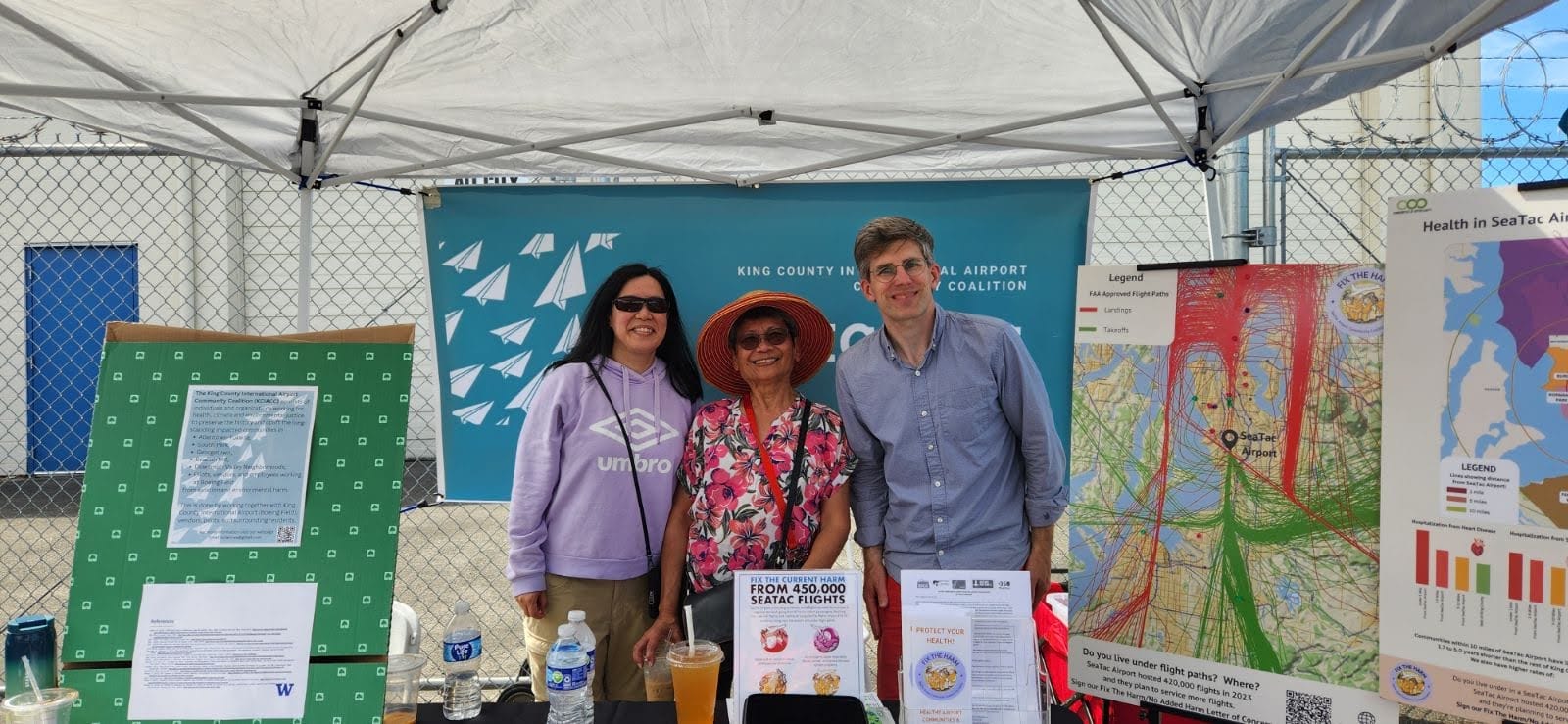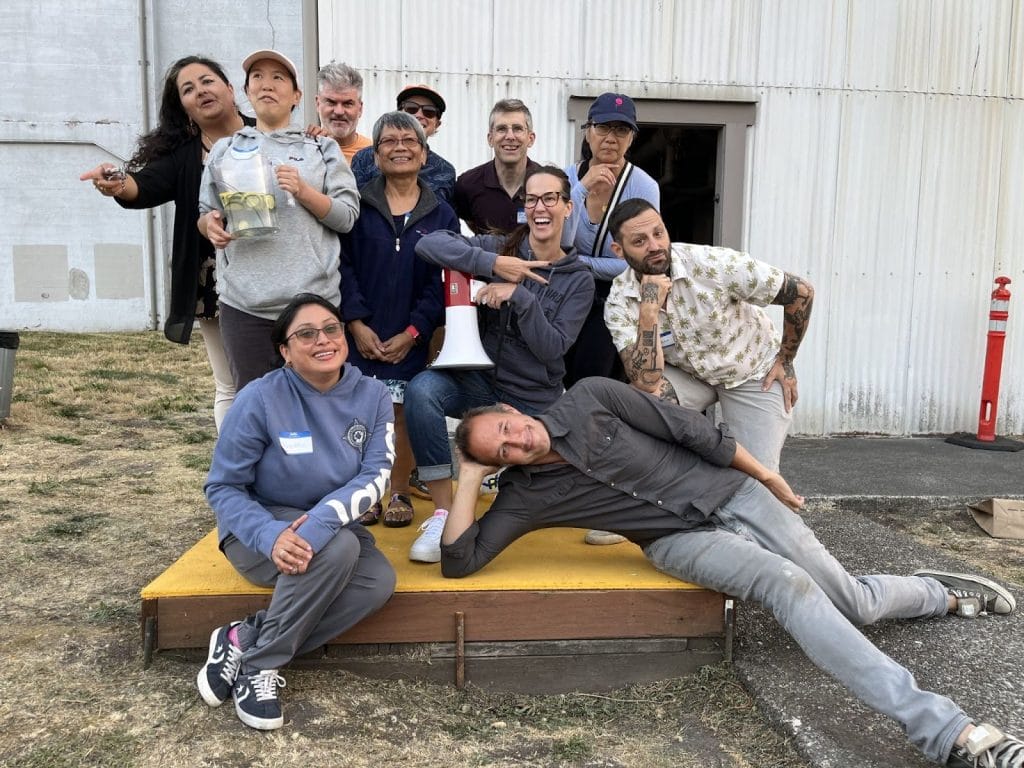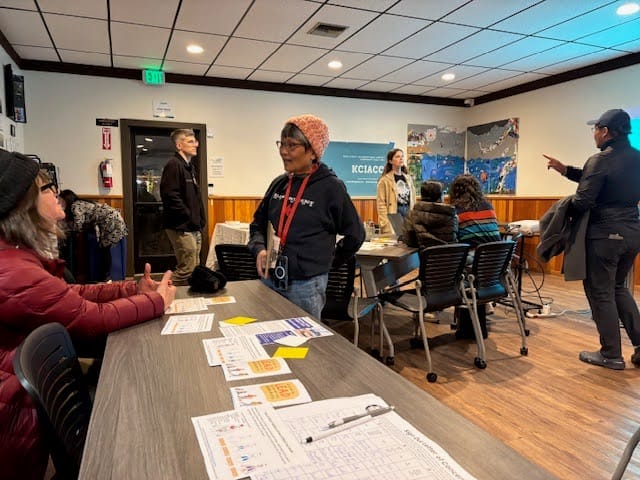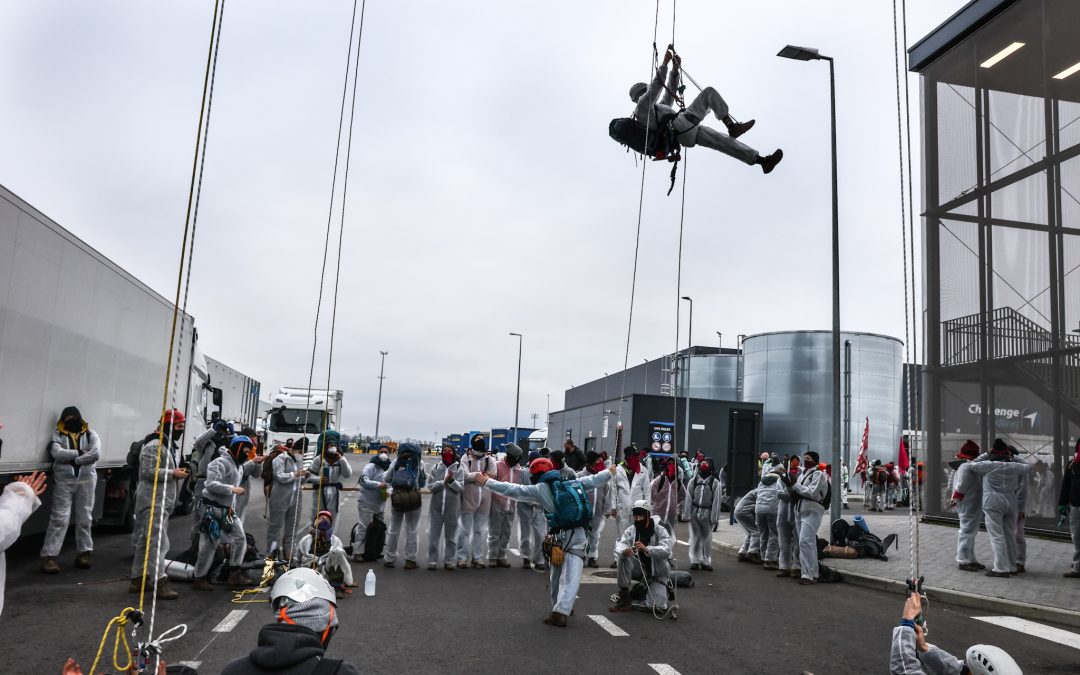Continuing the struggles against commercialisation, expropriation and environmental racism, community organising and coalition building successfully halted expansion plans for King County International airport in Seattle, US. However, efforts continue to put care for affected communities at the centre of airport planning. This article by Savannah Helming and Laura Gibbons, for the 350 Seattle Aviation Team, explores what we can learn from the struggle.
In the neighbourhoods of South Seattle near King County International Airport (KCIA), the life expectancy of residents living within half a mile of the airport is reduced by eight to ten years compared to that of their neighbours, due to air pollution and emissions from leaded fuels used by smaller aircraft.
Residents also experience higher rates of health issues such as high blood pressure, cancer, and chronic lower respiratory disease. Additionally, the Duwamish River, which flows near the airport, is recognised by the Environmental Protection Agency as one of the most polluted rivers in the country.
Aviation and environmental racism impacting communities
The majority of residents in communities adjacent to the airport are people of colour and have higher rates of poverty than King County as a whole. Of the 5,600 residents who live within half a mile of the airport, 74 percent are people of colour and 52 percent speak a language other than English.
Thus, King County’s 2019 Federal Aviation Administration (FAA) Master Plan to expand the airport underscored racism and environmental harm as a public health crisis.
KCIA, also known as Boeing Field, is a publicly owned and operated airport located four miles south of downtown Seattle. As explained on the King County website, the airport serves “small commercial passenger airlines, cargo carriers, private pilots, corporate jets, helicopters, and military aircraft.” Along with SeaTac Airport, KCIA already accounted for 13% of transportation emissions and 3.4% of total emissions in King County. Not only were these numbers concerning – they only accounted for emissions produced during takeoff and landing, meaning that the other 90% of emissions were completely unaccounted for.
A decades-long community struggle
The struggle against KCIA is not a new one. Its roots can be traced back to the late 1990s, when King County attempted to transform South Seattle, including the Georgetown neighborhood, into an area exclusively for commercial use. As part of these plans, the airport aimed to use eminent domain (expropriation) to acquire the entire neighborhood, according to Marvin McCoy, a community member actively involved in resisting the expansion plans in the 1990s.
“There was still some old, rundown housing that was inexpensive, and housing in the city was expensive,” said McCoy. “People moved into the rundown houses and fixed them up. I don’t think the city saw this coming… the city did not think people would move into an area of rundown houses and be willing to fix them up like they did in Georgetown.”
McCoy and other community members who fought back filed a lawsuit against King County in the 1990s. “The lawsuit we filed didn’t do much, but it did change the way the County looked at the residents,” McCoy said. “Then everyone started going to town hall meetings and [the County] would at least listen to us after that.”
Activists from the campaign against King County Airport
Building a coalition around concerns of equity
King County announced its plans to expand the airport in 2019 with the release of the FAA Master Plan, which included the construction of an extended runway, additional airplane parking, and additional fuel farms. This expansion would increase the number of flights to and from the airport and facilitate the acquisition of additional property. There had been no community members at the table when these plans were made.
Several people involved with local community organisations were at a County meeting about the expansion, and decided to organise against it. They formed the KCIA Community Coalition (KCIACC), which comprised organisations representing various community and environmental groups, including the Duwamish River Community Coalition, Puget Soundkeeper, the 350 Seattle Aviation Team, the Beacon Hill Council, and Friends of Georgetown History. The lack of community outreach and collaboration from KCIA was a significant area of concern, particularly in relation to the struggle for equity in King County. Community members and organisers were primarily concerned that BIPOC (Black, Indigenous, and People of Color) and low-income residents, who these plans would most impact, were excluded from the planning process, and community engagement efforts were not made.
“We went to King County Council and said, ‘Listen, if you’re going to do any changes inside the King County International Airport, you need to let us know,’” said Velma Veloria, former Washington State Representative and volunteer KCIACC organiser.
KCIACC presented the King County Council with a list of 12 equity needs, including a comprehensive environmental impact statement for the airport, the addition of two community members to the KCIA Roundtable, an advisory group with representatives from the surrounding community and aviation-related businesses, and the development of a community benefits agreement.
The County failed to meet these needs, so KCIACC brought the issue to local news publications, which was a primary organisational strategy, according to Veloria. “We got into the South Seattle Emerald, The Stranger did an article on us, and we went on the radio,” said Veloria.
Deep community organising was key to their success
Community organising stopped the expansion plans
Providing opportunities for community education about the harmful effects of leaded fuels and noise pollution from the airport was another key organisational strategy when pushing back against the Master Plan. “We did a slide presentation that we brought to the community, and it was really interesting, because the community didn’t know the procedures or the process by which the King County International Airport plans for their 20-year plan,” said Veloria.
After months of community engagement and education, press features, and dialogue with KCIA and King County, King County Executive Dow Constantine agreed not to move forward with the expansion. “Most of our work is grounded in community organising, which includes hosting tabling events, interactive report-backs with other organisations, and candidate forums,” said Veloria. “We made sure that we had events to explain the effects of leaded fuels, had people come to testify, and report back to the community on the challenges and successes. We made sure that for every success, we celebrated, and for every challenge, we continued to persevere. We continue to do community organising to educate our communities about the next steps, which right now are focused on the impact of leaded gas on the residents.”
For KCIACC, community organising is all about building trust with their neighbors and communities. Each presentation they made at schools and other organisations was specifically tailored to their audiences, to educate the community about the issues facing them. They also hired interpreters in Khmer, Spanish, Vietnamese, and Cantonese, the four most commonly spoken languages among residents.
“In the end what we strive for is to educate our communities on the harmful health impacts of KCIA and to be at the table of negotiations when these plans are being made so that we have a stronger voice,” said Veloria. “Our communities are hungry for these types of information.”
The struggle continues: putting care for the community at the centre
In 2023, KCIACC proposed a King County law, Ordinance 2023-0053, which made four demands: the addition of two seats at the Roundtable for Beacon Hill and South Park, the creation of a Roundtable advisory subcommittee to advise and make recommendations to the airport management, county executive, and County council, the co-creation and maintenance of a community benefits agreement by King County, the airport and the subcommittee that would address the environmental, climate, health, economic and livability concerns of residents and workers in airport-adjacent Duwamish valley neighborhoods, and the conduction of a comprehensive environmental impact assessment of all aeronautical, land transportation and airport activities at the airport every 10 years.
Opponents of the ordinance included KCIA management, the pilots of small aircraft using Boeing Field, and the Boeing union, who expressed concerns that halting the expansion plans would result in job losses. Going up against an aviation giant like Boeing was challenging, according to Veloria. When defending the ordinance, members of KCIACC found the most success in angling their messaging from a place of caring for the community rather than being overtly anti-Boeing or anti-airport. “We are not trying to shut down the airport,” responded Veloria. “What we’re trying to say is that you need to pay attention to the impacts of the airport on the surrounding communities.”
Ultimately, the only demand made in the proposed ordinance that was met was the addition of two community members to the KCIA roundtable. Still, being part of the roundtable is important because it makes it easier for the coalition to stay on top of the airport’s plans. KCIACC found other successes as well. The King County auditor’s office audited the airport and its management, reporting that KCIA lacked a clear strategy to address environmental concerns and had insufficient outreach to its impacted communities. It was also acknowledged that when KCIA did involve communities, it was often late in the project process, meaning that community concerns may not be adequately considered or addressed. As described in the report, “KCIA cannot clearly demonstrate how its efforts align with larger county goals like the King County Strategic Climate Action Plan and the King County Equity and Social Justice Strategic Plan.”
Although KCIACC successfully delayed the expansion of KCIA, the airport intends to revisit its expansion plans for 2045. The final plan has not yet been made public. However, after successfully halting the 2019 FAA Master Plan and advocating for more community engagement efforts, Veloria and other members of KCIACC feel that KCIA and King County are more likely to listen to them. “Now they’ve included us in their outreach program, and they’ve included the broader community to come and take a look, so whatever plans they are making now include community feedback and community outreach,” said Veloria. “We’re trying to build trust with each other and to build knowledge. So for us, that’s a win.”
Lessons Learned – what led to success?
- Nothing about us without us: A main area of concern was that BIPOC and low-income residents, who would be most impacted, were not at the table when expansion plans were made. The coalition provided information to local communities about the harmful impacts of the airport and the steps of the planning processes and collectively pushed for these communities to be engaged in a timely fashion in decisions that affect them
- Build a coalition: The campaign connected various community and environmental groups together in a collective effort to build power
- Centre building trust in the communities: Sharing information through talks at existing community organisations and information tables at community events and using messaging tailored to the audience helped build trust with local communities. At events, ensuring interpretation for main languages spoken in the communities is important.
- Celebrate success & push forward: Celebrating every success and reporting back to the communities about the next steps helped keep up the motivation and pressure each time when facing a new challenge
- Amplify via the media: When the County Council, did not react to the coalition’s demands local media coverage helped build up pressure
- Centring community care: Framed the messaging from a place of caring for the community rather than being anti-industry or anti-airport helped the coalition in defending their demands and stopping the expansion plans
If you’re interested in finding out more information:
- Follow the KCIACC Facebook page
- Take a look at the Leaded avgas education project
- Or get in touch! Via Kciaccwa (at) gmail.com or Aviation (at) 350seattle.org





